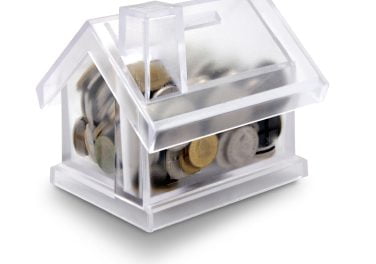In a recent first tuesday poll, 62% of respondents see rising mortgage interest rates on the horizon. Out of 241 votes, 149 said they believe mortgage rates will increase significantly enough in the next five years to drive down both sales volume and home prices in California.
16% expect rates to climb enough to affect either volume or price — but not both. Of course, volume sets the frequency of fees earned; price sets the amount of those fees.
The last 22% of voters don’t expect interest rate increases to affect either sales volume or pricing over the coming five years. This unlikely scenario relies on a robust-to-surging economy to push tenants into new homeownership, and to keep sellers from leaving homeownership to become tenants.
Analyzing the sequence
Currently, short-term borrowing rates — set by the Federal Reserve (the Fed) to determine what financial institutions pay to borrow money to lend — are essentially zero. Though the Fed has yet to provide a concrete timeline, it will raise short-term interest rates (and thus ARM rates) likely in late 2015 if the economic recovery continues apace.
The Fed’s short-term rate increases will set in as California home sales volume bottoms, amid the home price declines brought about by the speculator housing blowout of 2012-2013.
Fixed-rate mortgage (FRM) interest rates move with the bond market, particularly the 10-year Treasury Note (T-Note). T-Note investors are sensitive to whispers of future movement in short-term rates and will act to get out in front of the Fed’s imminent rate increases, driving FRM rates up prematurely in the process.
The bigger picture
Where short-term rates go, FRM rates most likely paved the way. When mortgage rates rise, what then?
To answer that, look first to the current real estate market conditions in California:
- flat-to-falling home sales volume since the end of the Great Recession;
- volatile pricing, only just beginning to fall after the speculative fever of 2012-2013;
- stagnant income and wages, despite recent gains in California employment numbers; and
- buyer purchasing power has dropped from its late-2012 peak due to increased FRM rates.
The one factor you can expect to hold constant into 2017 is real income. The ongoing recovery has produced only minimal economic benefit for the vast low- and mid-tier homebuyer segments since they have not participated in GDP growth. They may be back to work, but earnings have deteriorated in real terms while recent housing price gains have greatly exceeded the rate of inflation.
In this second Gilded Age in which we find ourselves, the bulk of wealth gained accrues to the rentier class at the top of the economic pyramid. Working Americans continue to be indebted, with virtually no gains in pay. Thus, with individual income held constant, a buyer’s ability to borrow decreases as mortgage rates rise from their recent bottom.
It’s all related
Pricing is ultimately governed by end user demand. With housing, demand is governed by end users’ ability to borrow mortgage funds, a product of incomes and mortgage interest rates. Today’s prices were bid up in 2013 not by that organic end-user demand but by overactive speculators. Though they may be falling now, home prices are still unsustainably inflated. It will take a few months yet before prices fall back in line with underlying market conditions, thanks to the seller sticky pricing phenomenon.
This weak end user demand cycle will continue to drive down sales volume into late-2015, then prices for about another 12 months. So, by the time the Fed increases short-term interest rates — which is inevitable as the economy improves — FRM rates will have already risen in anticipation. Those increased FRM rates (and later, ARM rates, once the Fed moves) will further push down homebuyer purchasing power, automatically reducing demand and curtailing sales volume. Pricing will follow about a year later.
The dominos are in place. The only remaining question: when in 2015 will the Fed give the first push?















At the very bottom there were those who said prices had more room yet to fall. Some people who could have bought then are now priced out. This time around, it may well be that the Fed won’t be able to raise rates for a much longer period of time than they’re talking about now. there are politics involved, but the bottom line is that it’s hard to get inflation under the conditions the author has outlined. As an agent, I intend to continue helping my well qualified clients to buy homes with fixed interest rate loans. And I will continue to be cautious about starter rates and other risky strategies. I recommend you do the same. However I continue to congratulate First Tuesday for taking an interest and a certain amount of risk to have an opinion about the real estate market and spark debate.